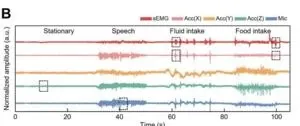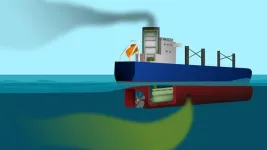(Press-News.org) A Perspective explores lessons learned from recent deadly wildfires and proposes a strategy for managing wildfire risk. Wildfire risk and wildfire deaths are on the rise due to climate change, policies of fire suppression, and development in the wildland-urban interface. The August 8, 2023, fire that destroyed the historic town of Lahaina, Hawaii, claimed 98 lives, in part due to a failure to alert residents to the danger. In 2018, 104 lives were lost in a fire in Mati, Greece, for which there were also no alerts. For both incidents, Costas E. Synolakis and Georgios Marios Karagiannis argue that lives would have been saved had there been evacuation orders issued. In both cases, traffic was mismanaged, some victims perished in their cars, and some survivors who self-evacuated had to be rescued from nearby beaches. The authors propose a long-term strategy for integrating wildfire risk management into forest land management and note that large fires are often followed by investment in fire-fighting infrastructure, but not wildfire mitigation and prevention. Prevention and mitigation measures should be increased, the authors argue, including retrofitting buildings to meet or exceed building code standards, limiting development in the wildland-urban-interface, prescribed burning, fuel reduction, and forest thinning. The authors call for governments to work closely with the forest products industry to integrate land management and wildfire risk management as well as for a global system for reporting wildland-urban interface fires. In addition, public alert and warning systems need to be improved, along with evacuation plans, including plans for people with functional needs. The authors describe how scientists’ advocacy after the Mati and Maui catastrophes led to advances in each country’s wireless emergency alert systems. The authors argue that alerts should go out through multiple communication pathways including mobile and landline phones, radio, television, and highway variable message signs. According to the authors, authorities should also take advantage of new technologies, including machine learning, to forecast in real-time worst-case scenarios once fires start, along with Earth observation from satellites, to improve monitoring and predictive capabilities.
END
Wildfire risk management in the era of climate change
Lessons learned from wildfires in Greece and the Hawaiian Islands
2024-05-07
ELSE PRESS RELEASES FROM THIS DATE:
A smart neckband for tracking dietary intake
2024-05-07
A smart neckband allows wearers to monitor their dietary intake. Automatically monitoring food and fluid intake can be useful when managing conditions including diabetes and obesity, or when maximizing fitness. But wearable technologies must be able to distinguish eating and drinking from similar movements, such as speaking and walking. Chi Hwan Lee and colleagues propose a machine-learning enabled neckband that can differentiate body movements, speech, and fluid and food intake. The neckband’s sensor module includes ...
Gut bacteria metabolite shows promise of fighting inflammatory bowel disease
2024-05-07
Gut microbiota or the population of microbial inhabitants in the intestine, plays a key role in digestion and maintenance of overall health. Any disturbance in the gut microbiota can, therefore, have a systemic impact. Intestinal microbes metabolize dietary components into beneficial fatty acids (FAs), supporting metabolism and maintaining host body homeostasis. Metabolites originating from polyunsaturated fatty acids (PUFAs), influenced by gut microbes such as Lactobacillus plantarum, exhibit potent effects on ...
Breakthrough paves the way for next generation of vision implants
2024-05-07
A group of researchers from Chalmers University of Technology in Sweden, University of Freiburg and the Netherlands Institute for Neuroscience have created an exceptionally small implant, with electrodes the size of a single neuron that can also remain intact in the body over time – a unique combination that holds promise for future vision implants for the blind.
Often when a person is blind, some or part of the eye is damaged, but the visual cortex in the brain is still functioning and waiting for ...
New study finds increase in exposures to synthetic tetrahydrocannabinols among young children, teens, and adults
2024-05-07
(COLUMBUS, Ohio) – A sharp rise in exposures to synthetic cannabis products among youth — some leading to hospitalization — highlights the need for increased education around the dangers of exposure and increased focus on safe storage and packaging, according to pediatricians and researchers at Nationwide Children’s Hospital and the Central Ohio Poison Center.
A new study conducted by researchers at the Center for Injury Research and Policy of the Abigail Wexner Research Institute at Nationwide Children’s Hospital and the Central Ohio Poison Center examined trends in calls to poison ...
Dogma-challenging telomere findings may offer new insights for cancer treatments
2024-05-07
A new study led by University of Pittsburgh and UPMC Hillman Cancer Center researchers shows that an enzyme called PARP1 is involved in repair of telomeres, the lengths of DNA that protect the tips of chromosomes, and that impairing this process can lead to telomere shortening and genomic instability that can cause cancer.
PARP1’s job is genome surveillance: When it senses breaks or lesions in DNA, it adds a molecule called ADP-ribose to specific proteins, which act as a beacon to recruit other ...
Scientists cooked pancakes, Brussels sprouts, and stir fry to detect an oxidant indoors for the first time
2024-05-07
A feast cooked up by UBC researchers has revealed singlet oxygen indoors for the first time.
Oxi-don’t
Singlet oxygen is an oxidant. These chemical compounds can be beneficial—ozone in the stratosphere is one example—but can also cause stress to our lungs, contributing to the development of cancer, diabetes, and heart disease in the long term.
Cooking foods can release brown carbon, molecules with the potential to create oxidants when they absorb light. In addition, exposure to cooking emissions has been linked to chronic diseases in chefs.
Historically, it was thought there wasn’t enough light indoors to have much ...
Quantum breakthrough: World’s purest silicon brings scientists one step closer to scaling up quantum computers
2024-05-07
More than 100 years ago, scientists at The University of Manchester changed the world when they discovered the nucleus in atoms, marking the birth of nuclear physics.
Fast forward to today, and history repeats itself, this time in quantum computing.
Building on the same pioneering method forged by Ernest Rutherford – "the founder of nuclear physics" – scientists at the University, in collaboration with the University of Melbourne in Australia, have produced an enhanced, ultra-pure form of silicon that allows ...
New super-pure silicon chip opens path to powerful quantum computers
2024-05-07
Researchers at the Universities of Melbourne and Manchester have invented a breakthrough technique for manufacturing highly purified silicon that brings powerful quantum computers a big step closer.
The new technique to engineer ultra-pure silicon makes it the perfect material to make quantum computers at scale and with high accuracy, the researchers say.
Project co-supervisor Professor David Jamieson, from the University of Melbourne, said the innovation – published today in Communication Materials, a Nature journal – uses qubits of phosphorous atoms implanted ...
Millions in costs due to discharge of scrubber water into the Baltic Sea
2024-05-07
Discharge from ships with so-called scrubbers cause great damage to the Baltic Sea. A new study from Chalmers University of Technology, Sweden, shows that these emissions caused pollution corresponding to socio-economic costs of more than EUR 680 million between 2014 and 2022. At the same time, the researchers note that the shipping companies' investments in the much-discussed technology, where exhaust gases are "washed" and discharged into the sea, have already been recouped for most of the ships. This means that the industry is now making billions ...
Bio-inspired materials’ potential for efficient mass transfer boosted by a new twist on a century-old theory
2024-05-07
The natural vein structure found within leaves – which has inspired the structural design of porous materials that can maximise mass transfer – could unlock improvements in energy storage, catalysis, and sensing thanks to a new twist on a century-old biophysical law.
An international team of researchers, led by the NanoEngineering Group at the Cambridge Graphene Centre, has developed a new materials theory based on ‘Murray’s Law’, applicable to a wide range of next-generation functional ...
LAST 30 PRESS RELEASES:
Injectable breast ‘implant’ offers alternative to traditional surgeries
Neuroscientists devise formulas to measure multilingualism
New prostate cancer trial seeks to reduce toxicity without sacrificing efficacy
Geometry shapes life
A CRISPR screen reveals many previously unrecognized genes required for brain development and a new neurodevelopmental disorder
Hot flush treatment has anti-breast cancer activity, study finds
Securing AI systems against growing cybersecurity threats
Longest observation of an active solar region
Why nail-biting, procrastination and other self-sabotaging behaviors are rooted in survival instincts
Regional variations in mechanical properties of porcine leptomeninges
Artificial empathy in therapy and healthcare: advancements in interpersonal interaction technologies
Why some brains switch gears more efficiently than others
UVA’s Jundong Li wins ICDM’S 2025 Tao Li Award for data mining, machine learning
UVA’s low-power, high-performance computer power player Mircea Stan earns National Academy of Inventors fellowship
Not playing by the rules: USU researcher explores filamentous algae dynamics in rivers
Do our body clocks influence our risk of dementia?
Anthropologists offer new evidence of bipedalism in long-debated fossil discovery
Safer receipt paper from wood
Dosage-sensitive genes suggest no whole-genome duplications in ancestral angiosperm
First ancient human herpesvirus genomes document their deep history with humans
Why Some Bacteria Survive Antibiotics and How to Stop Them - New study reveals that bacteria can survive antibiotic treatment through two fundamentally different “shutdown modes”
UCLA study links scar healing to dangerous placenta condition
CHANGE-seq-BE finds off-target changes in the genome from base editors
The Journal of Nuclear Medicine Ahead-of-Print Tip Sheet: January 2, 2026
Delayed or absent first dose of measles, mumps, and rubella vaccination
Trends in US preterm birth rates by household income and race and ethnicity
Study identifies potential biomarker linked to progression and brain inflammation in multiple sclerosis
Many mothers in Norway do not show up for postnatal check-ups
Researchers want to find out why quick clay is so unstable
Superradiant spins show teamwork at the quantum scale
[Press-News.org] Wildfire risk management in the era of climate changeLessons learned from wildfires in Greece and the Hawaiian Islands






